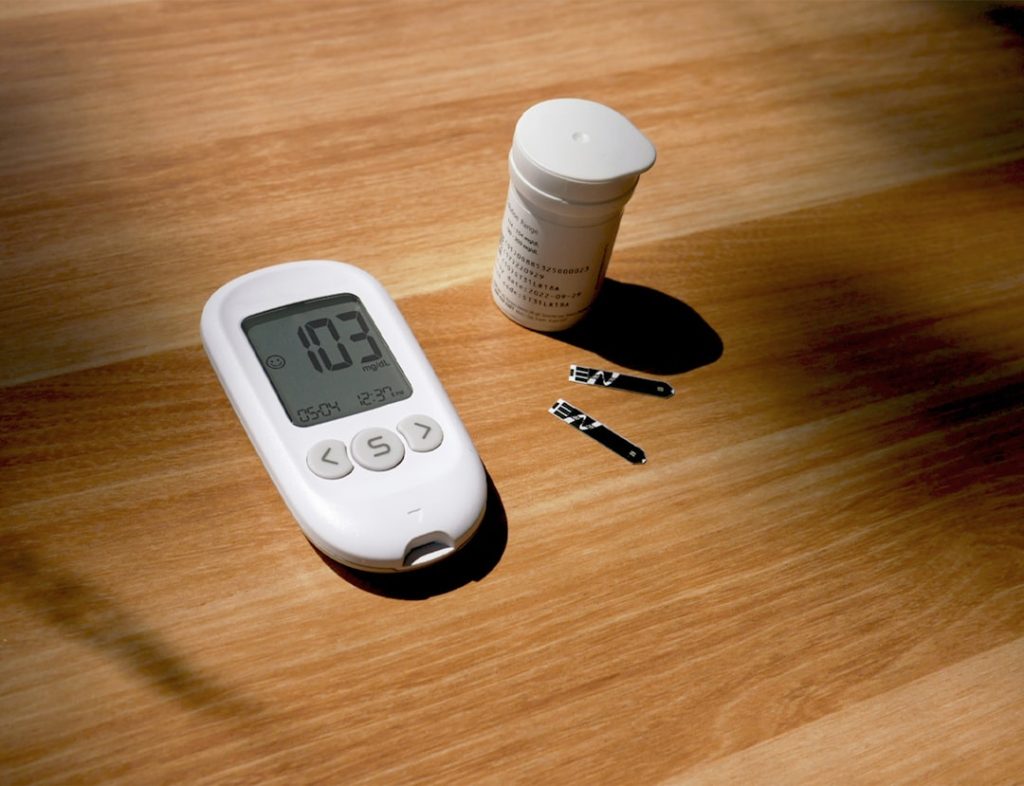The landscape of diabetes management has evolved significantly over the past few decades, particularly with the advent of new medications designed to treat Type 2 diabetes. These innovative therapies have emerged in response to the growing prevalence of the disease, which affects millions of individuals worldwide. The introduction of these new medications not only reflects advancements in medical research but also highlights a shift towards more personalized treatment approaches that consider the unique needs of each patient.
As healthcare providers and patients alike navigate this evolving landscape, understanding the implications of these new treatments becomes paramount. Recent years have seen the approval of several novel classes of medications that target various physiological pathways involved in glucose regulation. These include glucagon-like peptide-1 (GLP-1) receptor agonists, sodium-glucose co-transporter-2 (SGLT-2) inhibitors, and dual agonists that target multiple receptors simultaneously.
Each of these classes offers distinct mechanisms of action and benefits, providing healthcare professionals with a broader arsenal to combat the complexities of Type 2 diabetes. As we delve deeper into the benefits, mechanisms, and implications of these new medications, it becomes clear that they represent a significant advancement in diabetes care.
Key Takeaways
- New type 2 diabetes medications offer promising options for patients seeking alternative treatments.
- FDA approval of new medications provides patients with more choices and potential improvements in managing their condition.
- The mechanism of action of new medications targets different pathways in the body to help regulate blood sugar levels.
- New medications may offer advantages such as lower risk of hypoglycemia and weight loss compared to existing treatments.
- Potential side effects and safety considerations should be carefully considered and discussed with healthcare providers before starting new medications.
Benefits of the FDA Approval for Type 2 Diabetes Patients
The approval of new medications by the U.S. Food and Drug Administration (FDA) is a critical milestone for Type 2 diabetes patients, as it signifies not only the safety and efficacy of these treatments but also their potential to improve patient outcomes. One of the most significant benefits of FDA approval is the rigorous evaluation process that each medication undergoes before reaching the market.
This process ensures that patients have access to therapies that have been thoroughly tested in clinical trials, demonstrating their ability to effectively lower blood glucose levels while minimizing adverse effects. Moreover, FDA approval often leads to increased awareness and education about Type 2 diabetes management among healthcare providers and patients. With new medications entering the market, there is a renewed focus on diabetes care, prompting healthcare professionals to stay updated on the latest treatment options.
This heightened awareness can lead to more informed discussions between patients and their providers, ultimately empowering individuals to take an active role in managing their condition. Additionally, the availability of new medications can provide hope for patients who may not have responded well to existing therapies, offering them alternative options that may better suit their individual health profiles.
Mechanism of Action of the New Medications

Understanding the mechanisms of action of new Type 2 diabetes medications is essential for both healthcare providers and patients. For instance, GLP-1 receptor agonists mimic the action of incretin hormones, which are released in response to food intake. These medications enhance insulin secretion from the pancreas while simultaneously inhibiting glucagon release, leading to reduced hepatic glucose production.
Furthermore, GLP-1 receptor agonists slow gastric emptying, which contributes to a feeling of fullness and can aid in weight management—an important consideration for many individuals with Type 2 diabetes. On the other hand, SGLT-2 inhibitors work by targeting the kidneys’ glucose reabsorption process. By inhibiting the sodium-glucose co-transporter-2 protein in the renal tubules, these medications promote the excretion of excess glucose through urine.
This mechanism not only helps lower blood sugar levels but also has been associated with additional benefits such as weight loss and improved cardiovascular outcomes. The dual agonists represent a newer class that combines the actions of GLP-1 receptor agonists and glucagon receptor agonists, offering a multifaceted approach to glucose regulation and metabolic health.
Comparison with Existing Type 2 Diabetes Medications
When comparing new Type 2 diabetes medications with existing treatments, it is crucial to consider their efficacy, safety profiles, and overall impact on patient quality of life. Traditional therapies such as metformin have long been considered first-line treatments due to their established effectiveness and safety record. However, newer medications often provide additional benefits that can enhance patient adherence and satisfaction.
For example, while metformin primarily works by decreasing hepatic glucose production and improving insulin sensitivity, GLP-1 receptor agonists and SGLT-2 inhibitors offer complementary mechanisms that can lead to more comprehensive glycemic control. Furthermore, many new medications have been associated with weight loss—a significant advantage for individuals with Type 2 diabetes who often struggle with obesity. In contrast, some older medications may lead to weight gain or have limited effects on weight management.
The cardiovascular benefits observed with certain new agents also set them apart from traditional therapies. For instance, studies have shown that SGLT-2 inhibitors can reduce the risk of heart failure and improve renal outcomes in patients with Type 2 diabetes, making them particularly valuable for those with comorbid conditions.
Potential Side Effects and Safety Considerations
While new Type 2 diabetes medications offer promising benefits, it is essential to consider potential side effects and safety concerns associated with their use. Each class of medication comes with its own set of risks that healthcare providers must communicate effectively to patients. For example, GLP-1 receptor agonists may cause gastrointestinal side effects such as nausea, vomiting, or diarrhea, particularly during the initial stages of treatment as the body adjusts to the medication.
In rare cases, these agents have been linked to pancreatitis or thyroid tumors in animal studies, prompting ongoing monitoring and research into their long-term safety. SGLT-2 inhibitors also present specific safety considerations; they can increase the risk of urinary tract infections and genital mycotic infections due to their mechanism of promoting glucose excretion in urine. Additionally, there have been reports of diabetic ketoacidosis (DKA) occurring in patients taking these medications, even when blood glucose levels are not significantly elevated.
Therefore, it is crucial for healthcare providers to assess individual patient risk factors and monitor for any adverse effects throughout treatment.
Availability and Cost of the New Medications

The availability and cost of new Type 2 diabetes medications can significantly impact patient access and adherence to treatment regimens. While many new agents have received FDA approval, their accessibility may vary based on factors such as insurance coverage and pharmacy distribution networks. Patients may encounter challenges in obtaining these medications due to formulary restrictions or high out-of-pocket costs associated with newer therapies compared to traditional options like metformin.
Cost considerations are particularly relevant given that many individuals with Type 2 diabetes are already managing multiple health conditions that require ongoing treatment. The financial burden associated with diabetes management can be substantial; therefore, understanding insurance coverage options and potential patient assistance programs is vital for ensuring access to necessary medications. Pharmaceutical companies often provide resources for patients struggling with costs, including copay assistance programs or discounts for those without insurance coverage.
Patient Education and Counseling for the New Type 2 Diabetes Medications
Effective patient education and counseling are critical components in the successful implementation of new Type 2 diabetes medications. Healthcare providers play a pivotal role in ensuring that patients understand how these medications work, their potential benefits, and any associated risks or side effects. This education should encompass not only information about the medication itself but also guidance on lifestyle modifications such as diet and exercise that can enhance treatment efficacy.
Moreover, fostering open communication between patients and healthcare providers is essential for addressing any concerns or misconceptions about new therapies. Patients should feel empowered to ask questions about their treatment options and express any fears they may have regarding side effects or long-term use. By creating a supportive environment where patients can engage in shared decision-making, healthcare providers can help individuals feel more confident in managing their diabetes effectively.
Future Research and Development in Type 2 Diabetes Treatment
The field of Type 2 diabetes treatment is continuously evolving as researchers explore new avenues for therapy development. Ongoing clinical trials are investigating novel compounds that target different pathways involved in glucose metabolism and insulin sensitivity. For instance, research into combination therapies that integrate existing medications with newer agents holds promise for enhancing glycemic control while minimizing side effects.
Additionally, advancements in technology are paving the way for innovative approaches to diabetes management. Continuous glucose monitoring systems and insulin delivery devices are becoming increasingly sophisticated, allowing for real-time data collection and personalized treatment adjustments. The integration of artificial intelligence into diabetes care may further revolutionize how healthcare providers tailor treatment plans based on individual patient data.
As we look ahead, it is clear that continued investment in research and development will be crucial for addressing the challenges posed by Type 2 diabetes. By fostering collaboration between researchers, clinicians, and patients, we can work towards more effective treatments that not only improve glycemic control but also enhance overall quality of life for those living with this chronic condition.
In recent developments, the FDA has approved new medications for the treatment of Type 2 diabetes, offering hope for improved management of the condition. These advancements are part of a broader trend in diabetes research, which includes exploring the potential benefits of existing diabetes drugs beyond their primary purpose. For instance, a related article discusses how diabetes drugs like Ozempic may reduce cancer risks, highlighting the multifaceted benefits of these medications. This underscores the importance of ongoing research and innovation in the field of diabetes treatment.
FAQs
What are the new type 2 diabetes medications approved by the FDA?
The new type 2 diabetes medications approved by the FDA include SGLT-2 inhibitors, GLP-1 receptor agonists, and DPP-4 inhibitors.
How do SGLT-2 inhibitors work?
SGLT-2 inhibitors work by blocking the reabsorption of glucose in the kidneys, leading to increased glucose excretion in the urine and lower blood sugar levels.
What are GLP-1 receptor agonists?
GLP-1 receptor agonists are medications that mimic the effects of the hormone GLP-1, which stimulates insulin secretion, reduces glucagon secretion, and slows gastric emptying, leading to lower blood sugar levels.
What is the mechanism of action of DPP-4 inhibitors?
DPP-4 inhibitors work by blocking the enzyme dipeptidyl peptidase-4, which inactivates incretin hormones that help regulate blood sugar levels, leading to increased insulin secretion and decreased glucagon secretion.
What are the potential benefits of these new type 2 diabetes medications?
The potential benefits of these new medications include improved blood sugar control, weight loss, and reduced risk of cardiovascular events in patients with type 2 diabetes.
Are there any potential side effects of these medications?
Common side effects of these medications may include urinary tract infections, yeast infections, gastrointestinal issues, and hypoglycemia. It is important to discuss potential side effects with a healthcare provider.
